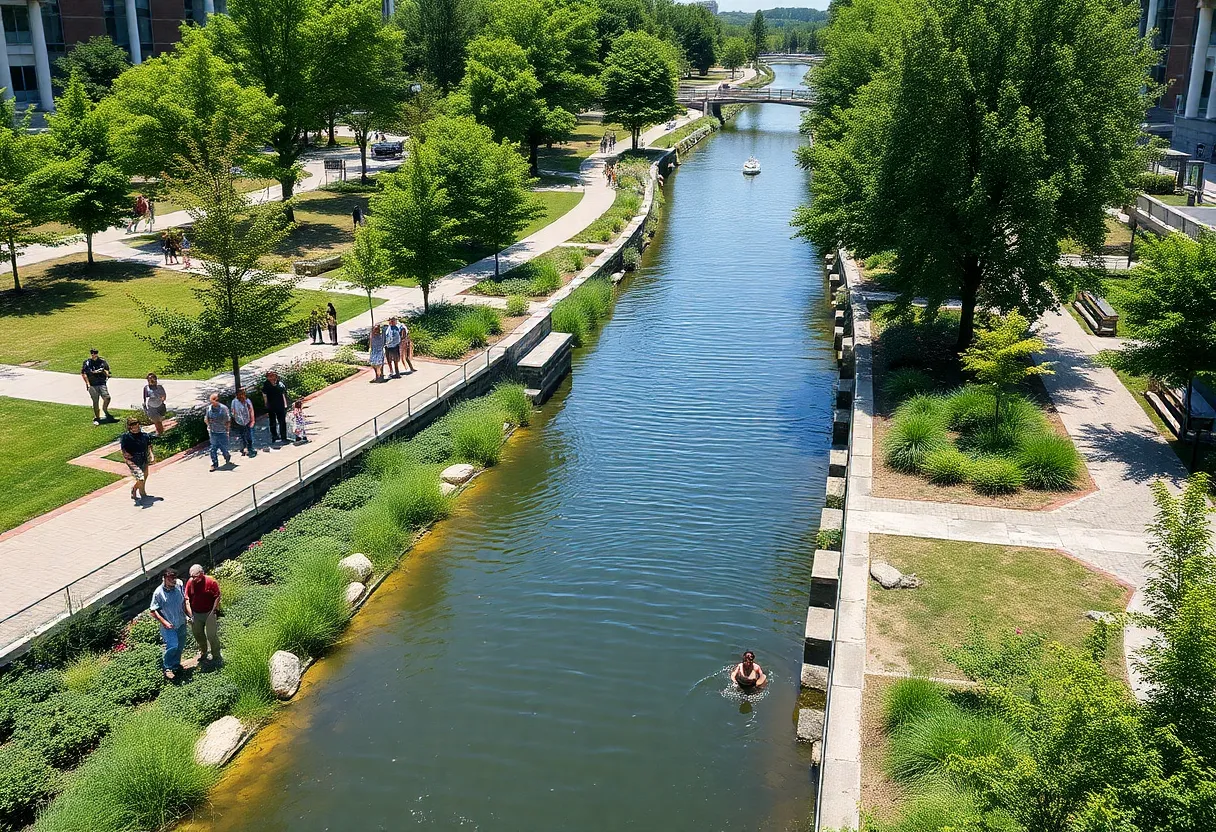Buffalo, NY, October 13, 2025
On October 13, a new state law designates Scajaquada Creek in Buffalo, NY as a historic waterway. This law allows for preservation and mixed-use development along the creek, enabling ecological restoration while meeting urban infrastructure needs. The designation instigates community involvement and promotes sustainable practices for future development, marking a significant step towards revitalization of this vital waterway.
Buffalo, NY: New State Law Protects Scajaquada Creek as Historic Waterway
Buffalo, New York – On October 13, 2025, a groundbreaking state law took effect, officially designating Scajaquada Creek as a historic waterway. This designation unlocks new opportunities for preservation and mixed-use development along its 16-mile path, balancing environmental restoration with urban infrastructure needs. The move addresses decades of industrial impact on the creek, which flows through the heart of Buffalo, and sets the stage for community-driven revitalization projects.
Preservation Efforts Gain Momentum
The new law empowers local authorities and environmental groups to prioritize the creek’s ecological health. Long burdened by pollution and urban encroachment, Scajaquada Creek now benefits from protected status that mandates careful planning for any development. This includes restoring native habitats, improving water quality, and creating accessible green corridors. The designation recognizes the creek’s historical significance as a vital natural feature that shaped Buffalo’s early settlement and industrial growth.
Under the legislation, portions of the adjacent Scajaquada Expressway, a controversial highway running parallel to the creek, could see transformative changes. Plans emphasize converting underused or elevated sections into green spaces, such as parks, trails, and recreational areas, without disrupting essential traffic flow. This hybrid approach aims to reconnect residents with the waterway that has been largely hidden by concrete infrastructure for over 50 years.
Mixed-Use Development Opportunities
The historic designation opens doors for mixed-use development that integrates residential, commercial, and recreational elements along the creek’s banks. Developers must now incorporate sustainable practices, such as permeable surfaces to reduce runoff and green roofs to enhance biodiversity. These projects are expected to boost local economies by attracting tourism and fostering walkable neighborhoods near the water.
Key areas targeted for redevelopment include the creek’s urban stretches through Delaware Park and industrial zones near the Niagara River. The law requires environmental impact assessments to ensure that any construction preserves the creek’s natural flow and wildlife corridors. This balanced framework prevents overdevelopment while encouraging innovative uses, like community gardens or educational centers focused on Buffalo’s waterway history.
Community Input Shapes the Future
Central to the law is a strong emphasis on community input, ensuring that Buffalo residents have a direct role in shaping the creek’s future. Public forums, workshops, and advisory boards will guide planning processes, allowing diverse voices—from neighborhood associations to indigenous groups—to influence outcomes. This inclusive approach addresses past grievances where infrastructure projects overlooked local needs.
Environmental organizations have welcomed the legislation, highlighting its potential to heal environmental damage from past industrial activities, including chemical contamination and habitat loss. The creek, once a thriving ecosystem supporting fish and bird populations, suffered from decades of untreated sewage and factory runoff. Now, with state backing, cleanup initiatives can accelerate, potentially restoring the waterway to a healthier state within the next decade.
Historical Context and Broader Impact
Scajaquada Creek has deep roots in Buffalo’s history, originally serving as a key transportation route for Native American communities and early European settlers. Named after a Seneca word meaning “land of the three falls,” it powered mills and factories during the city’s 19th-century boom. However, rapid urbanization in the 20th century led to the creek being channelized and overshadowed by the expressway, built in the 1960s to ease traffic congestion.
The expressway itself has faced criticism for dividing neighborhoods and contributing to air pollution. Advocacy efforts over the past 15 years, including calls to cap or reroute sections, paved the way for this law. By designating the creek as historic, New York State joins a growing national trend of reclaiming urban waterways, similar to projects along the Los Angeles River or Chicago’s North Branch.
This development positions Scajaquada Creek as a cornerstone of Buffalo’s ongoing renaissance, enhancing the city’s appeal as a sustainable urban center. As planning unfolds, the focus remains on creating a legacy that honors the creek’s past while securing its role in a vibrant future for generations to come.
FAQ
What is the new state law about Scajaquada Creek?
A new state law designates Scajaquada Creek as a historic waterway on October 13, 2025, enabling preservation efforts and mixed-use development along its path.
How will the law impact the Scajaquada Expressway?
The law enables environmental groups to applaud the move to transform the expressway into green spaces while maintaining infrastructure.
What role does community input play in the plans?
Community input will shape future plans for this vital Buffalo landmark.
Why is Scajaquada Creek considered a vital landmark?
Scajaquada Creek is a vital Buffalo landmark due to its historical and ecological significance.
Key Features of Scajaquada Creek Revitalization
| Feature | Description |
|---|---|
| Historic Designation | A new state law designates Scajaquada Creek as a historic waterway on October 13, 2025. |
| Preservation Efforts | Enables preservation efforts and mixed-use development along its path. |
| Environmental Transformation | Environmental groups applaud the move to transform the expressway into green spaces while maintaining infrastructure. |
| Community Involvement | Community input will shape future plans for this vital Buffalo landmark. |
| Development Scope | Focuses on balancing ecological restoration with urban mixed-use projects. |
Deeper Dive: News & Info About This Topic
HERE Resources
Buffalo Public Schools Address Teacher Diversity Challenges
Buffalo Schools Expand Native American Heritage Program
Students Strengthen Ties to Native American Heritage Through New School Program
Buffalo, NY Revitalization Efforts Spotlighted in Business Report
Buffalo’s Economy Gains from Bills’ Home Games
Buffalo’s Scajaquada Creek Corridor Designated as National Heritage Site
Buffalo Manufacturing Sector Experiences Significant Sales Growth
Elaine Swords Passes Away in Buffalo, NY
Scajaquada Creek Corridor Designated as National Heritage Area




